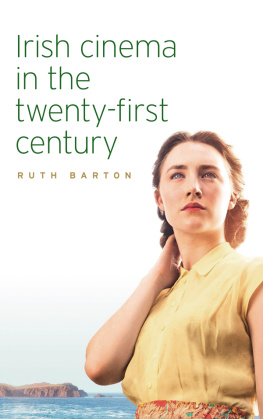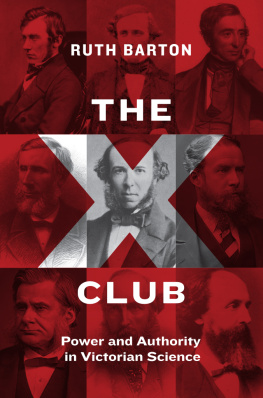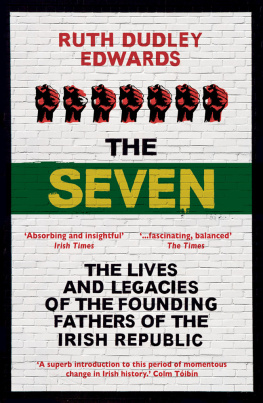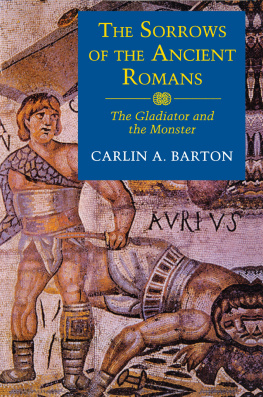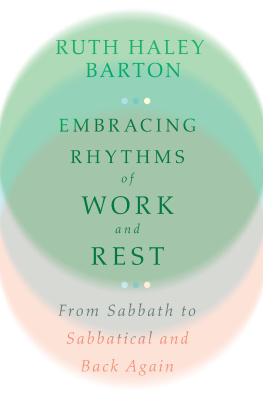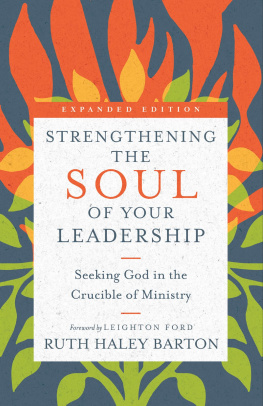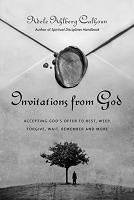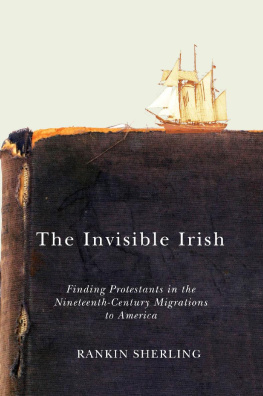Copyright Ruth Barton 2019
The right of Ruth Barton to be identified as the author of this work has been asserted by her in accordance with the Copyright, Designs and Patents Act 1988.
Published by Manchester University Press
Altrincham Street, Manchester M1 7JA
www.manchesteruniversitypress.co.uk
British Library Cataloguing-in-Publication Data
A catalogue record for this book is available from the British Library
ISBN 978 1 5261 3837 8 hardback
ISBN 978 1 5261 2444 9 paperback
First published 2019
The publisher has no responsibility for the persistence or accuracy of URLs for any external or third-party internet websites referred to in this book, and does not guarantee that any content on such websites is, or will remain, accurate or appropriate.
Typeset by Out of House Publishing
To
Willie, Conal, Eoin, Paddy
&
In memory of Anne Barton
(19192016)
This publication is the culmination of many years of teaching Irish cinema. Thank you so much to all my students for making me think about what I was saying. Thank you to my peers for turning any conference session we have been involved in into one about Irish cinema, whatever the ostensible topic; to the libraries of Trinity College Dublin and the Irish Film Institute, to the staff at the IFI bookshop, and to my colleagues in the Department of Film Studies at Trinity College Dublin. Thank you to those filmmakers who gave me access to their work, to the production companies for allowing me to use stills from their films, and authors who sent me hard-to-obtain materials. Funding received under the SPeCTReSS network opened me up to new ideas on cultural trauma, as well as enabling me to spend a semester at the University of So Paulo, where much of this book was written. It was a pleasure to work with Manchester University Press and I am grateful for the feedback from the anonymous readers of the manuscript. As ever, none of this could have happened without the support of my family, to whom this book is dedicated, as ever, with love.
In October 2015, The Lobster (Yorgos Lanthimos, 2015) opened in Irish cinemas. Owing presumably to its starry cast Colin Farrell, Rachel Weisz, John C. Reilly, La Seydoux, Ben Whishaw and Olivia Colman and film festival success (it won the Jury Prize at the 2015 Cannes Film Festival), what was evidently a challenging art film played nationally in multiplexes as well as the more predictable Irish Film Institute and Lighthouse cinemas in Dublin. The gambit paid off, with the film being tipped to exceed a box office take of 1million by the end of its second week (RT
To pose the question as to whether The Lobster is an Irish film is, under these circumstances, laughable. In earlier critical times, a work such as this would have been written off as a europudding, that is, the indigestible outcome of mixing up multiple European funding sources with little or no investment in cultural engagement, and a dilution of the project of building a distinctive national cinema. Writing in 1987 in the seminal Cinema and Ireland, Kevin Rockett, for instance, warned of the necessary compromises of international co-productions (Rockett, Gibbons and Hill, : 143). Now, co-productions are the backbone of the Irish film industry and the understanding of what constitutes a national cinema is ever more elusive. Theories of transnationalism provide a positive way out of the damning europudding, while theorists of globalisation warn against the continued dilution of the local in the face of the global.
No research exists to prove it, but one may guess that another of the draws for Irish audiences of The Lobster was that it was, in some way, Irish. Colin Farrell promoted the film widely in the Irish media, and much was made of the local experience of its shoot.
):
Im not a big fan of Irish movies. I dont find them to be technically that accomplished. I dont find them that intelligent. So, Im trying to get away from the description of the movie as an Irish film Its not an Irish film. Its just set in Ireland with lots of Irish characters So when youre making a film there, youre trying to convince the Irish audience, no its not like all those terrible Irish movies youve seen before.
McDonaghs interview provoked national outrage as well as some considerable soul-searching. I was one of a number of writers on Irish film contacted to comment on his words (Shortall, the same definition. No one else, myself included, ventured anything more substantial. Several filmmakers, however, agreed with McDonagh, suggesting that Irish audiences undervalue their own cinema and it takes success in overseas markets to persuade them of its merits. Perhaps, then, it is incorrect to guess that Irish audiences particularly want to see Irish films. They may just want to see good films, or populist films, which is largely what Irish cinemas show.
The cream of non-Hollywood film production is exported, often only showing outside their home territories at film festivals. In this way, canons that may exclude much local work are formed. Hollywood itself is reliant on the export market for profit (and on selling on its product to other platforms). Irish audiences, accustomed to see the most populist or best of other industrys films, find themselves faced, at home, with all Irish films. Of those, they are most likely to select, particularly in the cinema, the releases that most conform to the films they enjoy from other territories. Others they may catch up with on television or alternative domestic viewing platforms. Outside of Ireland, by contrast, the perception of what constitutes Irish cinema largely depends on a limited choice of popular or award-winning releases.
This leaves Irish filmmakers with a conundrum that is far from new. They are much more likely to win audiences if they make films that closely resemble global product. They may have to stand by and watch filmmakers from other markets tell Irish stories that Irish audiences embrace, whereas their own films remain unwatched. Success for Irish filmmakers may be in other markets, working on non-Irish films. Neil Jordan, Jim Sheridan and Lenny Abrahamson all know this. Of these three, Jordan to date has managed best to make one for himself and one for the bank; he has also enjoyed most success with the move into long-form television even if The Borgias series (Showtime, 201113), which he created, was withdrawn before its final season. The wider Irish audiovisual industry is, as the tables in the Appendix demonstrate, largely geared towards foreign television shows. In years when major television dramas are shot in Ireland (Penny Dreadful (Showtime, 201416), Ripper Street (BBC/Amazon Video, 201216), The Tudors (Showtime, 200710)), foreign direct investment can be in excess of nine times that of local investment. Irish-made films are a small percentage of the industry, as is animation, and Irish documentaries an even smaller percentage. Audiovisual production in Ireland is therefore part of a global industry that is, in the main part, uninterested in local and national affiliations.
The globalisation of Irish production has been matched by the globalisation of Irish talent. Not just Irish actors, but directors and production personnel move easily between territories and cultures. In many ways, this has been a liberating process, and to be celebrated. It also challenges us to find new ways of talking about Irish film and to locate, within this whirlwind of competing voices, something to hold on to that is still national, local and meaningful. All this activity has taken place against a massive transformation of Irish society occasioned by the rise and fall of the Celtic Tiger.



